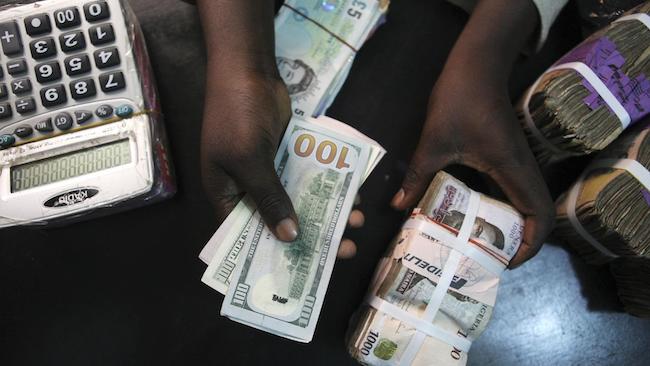Business
Confusion over CBN’s Naira/Dollar exchange rate

Despite accusing black-market operators of exchange rate manipulation, the Central Bank of Nigeria (CBN) has been displaying the incorrect Naira to the dollar exchange rate on its website for the past few weeks.
Ripples Nigeria observed that CBN website (www.cbn.gov.ng) is displaying the lower interbank exchange rate for Naira to the dollar as a replacement for the default NAFEX/Investors and Exporters window exchange rate adopted in July.
For instance, data from FMDQ OTC Securities Exchange (“FMDQ”) where investors and exporters’ official trade foreign currency showed that Naira closed at N414.30 against the dollar on Friday.
Despite having an investor and exporter window rate, the CBN’s site showed that Naira traded for N410.81/$ the same day.
READ ALSO:Naira falls against U.S dollar again, but CBN now has more firepower to defend
However, the N410.81 was the closing rate for the Interbank FX market on Thursday.
Why CBN adopted NAFEX rate
The CBN in July removed the N379/$1 exchange rate from its website which announced that the NAFEX window rate was the default reference exchange rate for official and legitimate transactions.
This followed a consistent update that tallies with what was quoted on the FMDQ Securities website until recently.
The decision to use the NAFEX exchange rate on its website was intended to unify the country’s numerous exchange rates while also allowing the Naira to find its own value without much interference.
The International Monetary Fund (IMF) and World Bank had been mounting pressure on the CBN to give up its monopoly on the exchange rate determination.
What is the difference between the I&E window rate to Interbank?
The Interbank Foreign Exchange Market (IFM) is the market “within banks” as trading between them represents an agreement to exchange the approved amounts of currency at the specified rate.
The rate is normally lower to the I&E window.
How does FMDQ determine NAFEX rate?
For FMDQ to determine NAFEX rates it uses pool submissions by the 10 contributing banks who bid for forex on behalf of their clients.
The biding amount during the day is then calculated using a trimmed arithmetic mean.
Join the conversation
Support Ripples Nigeria, hold up solutions journalism
Balanced, fearless journalism driven by data comes at huge financial costs.
As a media platform, we hold leadership accountable and will not trade the right to press freedom and free speech for a piece of cake.
If you like what we do, and are ready to uphold solutions journalism, kindly donate to the Ripples Nigeria cause.
Your support would help to ensure that citizens and institutions continue to have free access to credible and reliable information for societal development.























